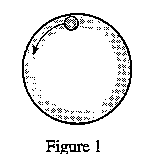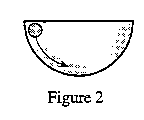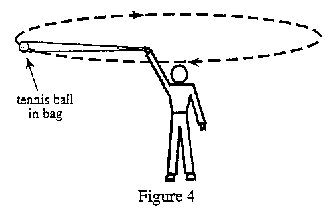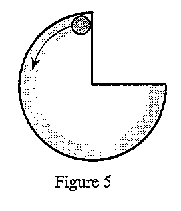|
Contributed by: Council Chief State School Officers (CCSSO)
TO THE STUDENT
Welcome to this experimental science test. We hope that you will
find it interesting and worthwhile. Carefully read through these
directions and the directions on the next page before you begin
to work.
You may be part of a group for the first part of this exercise.
Each group should carry out the experiment and collect the data
together, but each student must record the data in his or her own
booklet. Be sure to record the data exactly as you observe them.
After the data has been collected, each student should answer the
questions independently.
After you have finished your experiment and have recorded all
of the data, you will be asked to answer some questions about the
experiment and the data you recorded. Your answers must be written
in this test booklet in the space provided. Make sure that you understand
each question before you begin to write. At any time while you are
writing your answers, you may look back to the directions for the
experiment and the data you collected. Be sure that your answers
are written as clearly and neatly as possible.
Before you turn the page, read the list of materials given below
and check to make sure that your group has everything listed.
Materials
- 1 plate
- 1 marble
- 1 ruler
- 1 tennis ball
- 1 plastic bag
- string
- scissors
- pen or pencils
- tape
|
|
AFTER YOU HAVE READ THE DIRECTIONS, TURN TO THE NEXT PAGE AND BEGIN.
Circular Motion
You have noticed that your body gets pushed against the side of
a car (or bus) when the vehicle makes turns. You want to figure
out why this happens. You have learned in science class that objects
moving in a straight line continue moving n a straight line unless
acted on by an outside force. This is known as Newton's First Law,
or the law of inertia. We are going to look at objects that move
in circles to see what keeps them moving in a circle. You will then
use this knowledge to figure out why you get pushed against the
side of the car or into the person sitting next to you when the
car turns a corner.
You will work in a group to perform the experiments, but each
student will record his or her own observations and answer the questions
alone.
Part One
- You are going to roll a marble on a flat surface (a table top
or the floor). You will place the marble in the groove that runs
down the ruler so that you can direct the motion of the marble.
To start the marble in motion, slightly elevate the ruler with
the marble in the groove. Note the path that the marble takes.
Record your observations on the observation sheet.
- Place the plastic plate on a flat surface. Using the groove
of the ruler to start the marble in motion, roll the marble around
the edge of the plastic plate (see Figure 1 below). Observe the
motion of the marble and record it on the observation sheet.

- Cut the plastic plate in half. Roll the marble around the half-plate
(see Figure 2 below). Record your observations.

Observation Sheet
- The marble rolling off the ruler onto the floor or table top:
____________________________________________________________________________________
____________________________________________________________________________________
____________________________________________________________________________________
____________________________________________________________________________________
- The marble rolling around the edge of the plastic plate: ____________________________________________________________________________________
____________________________________________________________________________________
____________________________________________________________________________________
____________________________________________________________________________________
- The marble rolling around the edge of the half-plate: ____________________________________________________________________________________
____________________________________________________________________________________
____________________________________________________________________________________
____________________________________________________________________________________
- The marble rolling around the edges of the two half-plates:
____________________________________________________________________________________
____________________________________________________________________________________
____________________________________________________________________________________
____________________________________________________________________________________
Part Two
During this activity, you will work with a partner, but each student
will record his or her own data.
- Place the tennis ball inside the plastic bag.
- Use one end of your string to tie your plastic bag shut. Make
sure you have enough string left over to use as a handle. Also,
double-check the strength of your knot.
Once you have completed the above assembly you will go outside
for five minutes. Your pair will play a game of catch using the
ball-in-the-bag device you have made, as shown in Figure 4.

- You and a partner should stand 4-5 meters apart.
- Holding your device by the string, swing the ball around your
head in a circle.
- Determine when to let go of the string so that the ball will
go to your partner.
- Continue to play catch until you have determined the proper
"letting go" point.
- Give the ball-in-the-bag device to your partner, so that your
partner can determine the proper "letting go" point.
- Go back to your classroom and complete the following questions
on your own.
Questions
Please answer the following questions by yourself.
- Explain your location, your partner's location, and the "let
go" point for your game of catch. Why must you let go at that
point?
___________________________________________________________________
___________________________________________________________________
___________________________________________________________________
___________________________________________________________________
- Suppose that the plate were cut as shown below in Figure 5 instead
of being cut in half. Draw the path that the marble would take
if it were rolled around the edge. Explain your drawing.
 ___________________________________________________________________
___________________________________________________________________
___________________________________________________________________
___________________________________________________________________
___________________________________________________________________
- If you are traveling in a vehicle that makes a sudden turn,
your body gets pushed against the side or door. Explain why that
happens. You are encouraged to use diagrams to help answer the
question.
___________________________________________________________________
___________________________________________________________________
___________________________________________________________________
___________________________________________________________________
___________________________________________________________________
___________________________________________________________________
___________________________________________________________________
___________________________________________________________________
|





